Like the Chinese nation, the Jewish nation has a long history. But the difference between the Chinese and the Jews is that Jews are constantly migrating and wandering, and they have left footprints all over the world, including China. In this 12-day Jewish tour, we will explore the historical places where Jews settled in China and the footprints they left there. In the Jewish tour to Tianjin, you will visit the Jewish community and synagogue. In the Jewish tour to Harbin, you will see that the Jews at that time had a very normal and orderly life here despite their wandering life. In the Jewish Tour to Kaifeng, we will know how the Jews firstly came to China and lived here. In the Jewish Tour to Shanghai, we will visit the Jewish Refugees Museum there, and witness the profound friendship between the Chinese and the Jews, and see their never-give-up spirit in the face of difficulties.

Welcome to Beijing! Upon your arrival, our guide will pick you up at the airport and drive you to the hotel we have arranged for you. Today you can have a good rest and get ready for a good trip in the next few days.
After breakfast, your first destination is Tian’anmen Square, the center of Beijing. It covers an area of 440,000 square meters, nearly the size of the country Vatican, and can hold 1 million people for grand gatherings. In ancient times, it was where the emperors held grand celebrations and issued important decrees. During your visit, you will see the Tian’anmen Gate Tower, which was the front gate of the imperial city in the Ming (1368-1644) and Qing (1368-1912) dynasties. At that time, high-ranking officials must dismount when they got there and low-ranking officials were even not allowed to enter. And even more, peeping at the gate was a capital crime. But now, the square is open to the public. You can walk around here and feel the majesty of the old imperial square.
Continue going north, you will arrive at the Forbidden City (closed each Monday), also known as the Palace Museum. The Forbidden City is the imperial palace in Ming and Qing dynasties, with a history of more than 600 years. It is located in the center of Beijing’s central axis, covering an area of 720,000 square meters. In addition, the Forbidden City is surrounded by a 52-meter-wide moat, which also has a 600-year history. It can be used for defense and fire prevention in the Ming and Qing dynasties. The water can not only cut off the fire outside the city but also can be used to extinguish flames when buildings inside the city are on fire.
After lunch, you will visit the Temple of Heaven where emperors pay tribute to Heaven. During the Ming and Qing dynasties, sacrificial ceremonies were held twice a year. The Hall of Prayer for Good Harvest was the place for spring sacrifice, while the Circular Mound Altar was for winter sacrifice. It is worth noting that there is a round stone in the center of the Circular Mound Altar, which is called the Heavenly Heart Stone. If you stand on it and shout, the resounding echo will come from all directions. Now, we all know that this effect is caused by sound reflection, but hundreds of years ago, it was regarded as communication with Heaven. If you come here, you will have an opportunity to experience this interesting phenomenon by yourself.
Next, you will go to the Summer Palace where the royal family went for leisure. The Summer Palace was built by Emperor Qianlong (the sixth emperor of the Qing Dynasty) to show filial respect for his mother. The water area here accounts for three-quarters, so it’s cool in summer. Therefore, it is also a summer resort for the royal family. Most interestingly, there is a Suzhou Street, also known as “business street” built on both sides of Houhu Lake in imitation of the water town in southern China. When Emperor Qianlong first went to southern China, he was very fond of Shantang Street in Suzhou (in Jiangsu province). At that time, there was no photography technology, so he ordered a painter to draw the scenery of that street. When he returned to Beijing, he ordered people to design the same buildings on both sides of the Houhu Lake in the Summer Palace as a gift for his mother’s 60th birthday. However, this street was usually closed. It was only opened when the emperor and the Empress Dowager came to visit. At that time, the shopkeepers, clerks, customers, and even thieves in the street were all played by eunuchs and palace maids. To pretend to buy and sell at the street as an ordinary person is one way that the emperor and Empress Dowager to have fun.

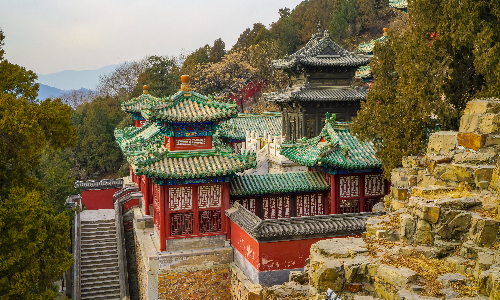
 Tianjin
Tianjin Today, you will head northwest for about 1 hour and 50 minutes to the Badaling Great Wall, 73 kilometers away from the center of Beijing. Badaling Great Wall, built in the Ming Dynasty, is one of the best-preserved and also an essential part of the well-known Great Wall. Since this section is precipitous and high, it’s an important military pass in the Ming Dynasty, protecting the capital Beijing. The Great Wall has a long history, and its oldest section can be traced back to more than 2000 years ago. We may wonder why after thousands of years, this magnificent and huge military defense project is still able to stand firm and extraordinary? It’s said that there is glutinous rice soup in the building materials, which contains stickiness. This may sound strange. But there was no cement at that time. If bricks only were glued by yellow mud and grass, they would be very unstable. Therefore, the builders of the Great Wall came up with this idea. They firstly make the mortar, and then pour the glutinous rice soup into it proportionally. The glutinous rice mortar made in this way is very sticky, even more sticky than some cement now. You will admire the amazing project with zero distance.
After lunch, you will be transferred to the train station and head to Tianjin by taking an estimated train G23 18:00/18:31. Your tour guide will pick up you at the destination and drive you to the hotel.
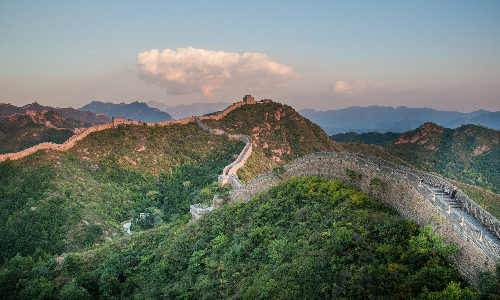
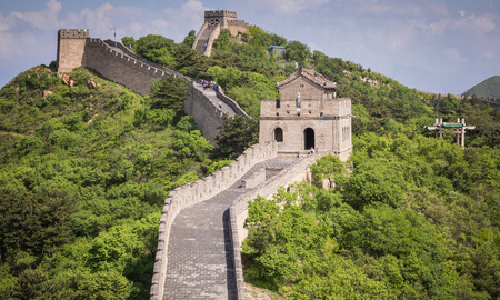
 Harbin
Harbin After breakfast, we will take you to the Yongle Bridge Tientsin Eye, usually known as the Tientsin Eye. This is one of the most remarkable landmarks in Tianjin, and also the only ferries wheel in the world built on the bridge. It combines a ferries wheel and a cross-river bridge and functions as sightseeing spot and transportation. It takes 28 minutes for the ferries wheel to rotate for a circle. When you reach the highest point, you can have a panoramic view of Tianjin City. That is how it gets its name the “Tientsin Eye”(Tianjin is also known as Tientsin).
After lunch, you will be driven to the center of Tianjin to visit the Five Major Avenues, where there are best-preserved western-style buildings in Tianjin and even in China. It is used to be a concession of 9 countries, so it has the most and the most complete buildings of different styles of different countries. There are more than 2,000 garden-style houses of different architectural styles built in the 1920s and 1930s in the Five Major Avenues, so it also has the name of World Architecture Expo.
It’s worth mentioning that there is a Gothic-style building located at the junction of Nanjing Road and Zhengzhou Avenue. It is a Synagogue, built in 1940. In the 1920s and 1930s, Tianjin once became the third-largest city inhabited by Jews, following Shanghai and Harbin. At that time, there were over 3500 Jews in Tianjin with relatively independent communities. Even during World War II, the Jewish Community in Tianjin was functioning normally and became a refuge for Jews to escape the Nazi.
Next, you will be transferred to the airport and fly to Harbin by an estimated flight CA1677 20:30/22:40. Upon your arrival, you will see your guide waiting for you at the airport and then you will be driven to the hotel we’ve arranged for you. Have a good rest tonight, tomorrow we will explore new places!
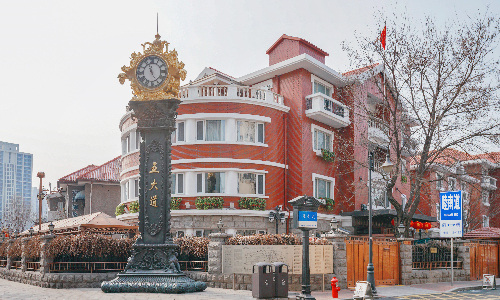
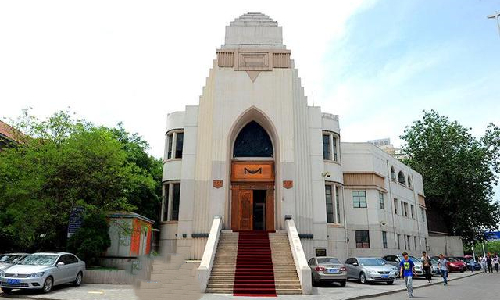
This morning, we will come to visit the Jewish Community in Harbin, which is adjacent to the busiest Street of Harbin, and also the center of Harbin’s economic, cultural and social activities. In the late 1800s, with the completion of the Chinese Eastern Railway, some Jews under political oppression came to northeast China, particularly Harbin, to seek asylum and a new living space. The Jews in Harbin once established the Jewish community here in China and developed a relatively complete social system. In the community, various infrastructures including churches, schools, shops, banks, hospitals and nursing homes were readily available. By 1920, the Jewish population in Harbin had reached 20,000, making it the largest Jewish community in China, and the economy within the community was growing at a rapid pace. The Jews have contributed a lot to the economic prosperity of Harbin.
After lunch, we will take you to the Harbin Jewish Cemetery, which was built in 1903. With an area of 836 square meters, it has 677 graves and is the largest and best-preserved Jewish cemetery in the Far East. The Jewish cemetery was originally built in the urban area but later moved to the eastern suburb of Harbin. There are restrooms, offices and a church in this cemetery, and the dead are buried in strict accordance with Hebrew rules. The exquisite gravestones in the cemetery were built meticulously in different forms, which not only reflects the creativity of the Jews, but also the good living conditions of the Jews at that time. The former Prime Minister of Israel Ehud Olmert particularly paid a visit to the graves of his grandparents, relatives and friends during his visit to China. He said, “Thank you for protecting our family in the past and making the Jews here live with dignity. We will always remember the kindness of the Chinese people.” As the Chinese saying goes, “Home is where you feel at ease and content.” Although the Jews had to live a wandering life at that time, they also gained new homes and new friends in Harbin. Therefore, Harbin can be regarded as the second hometown of these Jewish people, and they can come back whenever they want.
Free Time Suggestion:
If you are still energetic, you could stroll in Central Street, the most representative commercial street in Harbin. The famous Modern Hotel in the street was founded in 1906 in Harbin by a Russian Jew, Joseph Kasper, and it was a masterpiece of the “Art Nouveau (new art)” at that time. The Modern Hotel is a centuries-old Jewish-style building and one of the most luxurious multi-functional hotels at that time, combining dining, entertainment and accommodation.
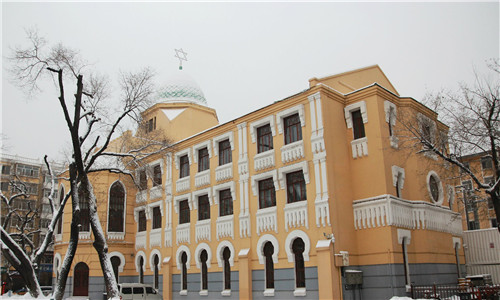
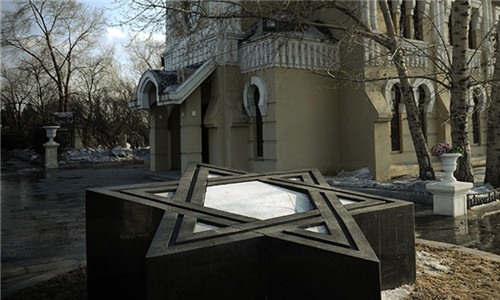
 Xi’an
Xi’an Today, we are going to finish our Harbin tour. You will have free time in the morning to enjoy the scenery here and prepare to say goodbye to this beautiful city. In the afternoon, you’ll be driven to the airport to take the estimated flight GJ8634 15:30/19:05 to Xi’an. Upon your arrival, your tour guide will take you to the hotel to have a good rest.
This morning, we will drive northeast for about 1 hour to visit the Terra Cotta Warriors and Horses Museum, which is 40 kilometers away from the center of Xi’an. This museum is the site of the subordinate tomb of the first emperor of China, Qin Shi Huang, the first political figure to complete the great unification of China and the first Chinese monarch to call himself emperor. The terracotta warriors were the burial objects and were used to guard his tomb after his death. The Terracotta Warriors and Horses are magnificent in scale, with a neatly arrayed, well-equipped and imposing procession. If you look closely, you will notice that each warrior has a different look, and some people even say that you can even find a figure who looks like you. These warriors are dressed according to their official rank, including general warriors, knight warriors and the commanders. The Terracotta Warriors and Horses are not only famous in China but are also unparalleled in the world. Former French President Jacques Chirac visited the Terracotta Warriors and Horses in 1979 and said, “You are not really in Egypt until you see the pyramids, and you are not really in China until you see the Terracotta Warriors and Horses.”
After lunch, we will visit the Big Wild Goose Pagoda, the symbol of ancient Xi’an. As one of the most famous Buddhist pagodas in China, the Big Wild Goose Pagoda is in the well-known Daci’en Temple. The Big Wild Goose Pagoda was built under the charge of the famous monk Xuanzang, also known as the first abbot of Daci’en Temple. When Xuanzang returned from ancient India, he brought back a large number of Sanskrit classics and Buddha relics. To enshrine these treasures, he designed and directed the construction of the Big Wild Goose Pagoda. After its completion, Xuanzang also translated a large number of Sanskrit classics here. The Big Wild Goose Pagoda is an imitation of the Indian Wild Goose Pagoda, which is a testimony of the communication of Indian culture and Chinese culture.
Next, we will go to the Ancient City Wall of Xi’an, which is the largest and best-preserved ancient city wall in existence in China. This wall was built on the foundations of the Chang’an (ancient Xi’an) City Wall during the Tang Dynasty (618-907). The existing part was built during the Ming Dynasty and is 13.7 kilometers long. Here you will find a complete set of military facilities on the wall, such as the moat, gates, watchtowers, arrows and enemy towers, forming a tight military defense system.
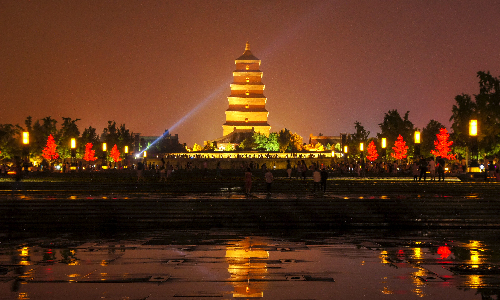
 Kaifeng
Kaifeng This morning, we are going to leave Xi’an and go to Kaifeng. You will be transferred to the train station to take the estimated train G3154 09:00/11:25 to Kaifeng. Your Kaifeng tour guide will be waiting for you at the destination when you arrive at noon. Welcome to Kaifeng!
After lunch, we will come to the Kaifeng Museum (closed each Monday), which was built in 1962 and has a total area of 54,286 square meters. It has four main exhibition halls: the Fine Stone Carving Exhibition, the Woodcut New Year’s Painting Exhibition, the Ancient Civilizations of Kaifeng Exhibition, and the Northern Song Dynasty (960-1127) History and Culture Exhibition. There are 8,000 pieces of cultural relics, including jade articles, paintings, calligraphy works, bronze wares and ceramics.
Kaifeng was once the ancient capital of eight dynasties in China and the world’s largest city during the Northern Song Dynasty. The designers of Kaifeng Museum have cleverly used models, sculptures, and wax figures to show visitors the buildings and marketplaces at that time. In addition, a dynamic projection of the famous painting “Along the River During the Qingming Festival” of the Northern Song Dynasty is designed here to help the visitors understand more clearly and vividly the prosperous scene of this city. In the museum, you will see the history of Kaifeng in various periods.
Next, we are going to visit Nan Jiaojing Hutong, where the descendants of ancient Jews live. Their ancestors were Jewish merchants who came to China to do business in the Song Dynasty (960-1279). The Song Dynasty was open to the outside world and had a highly developed foreign trade economy with large population, vast territory and deep pockets. China became one of the first destinations for foreign merchants to do business at that time. The Song Dynasty was very friendly to foreign merchants and set up shipping departments in several coastal cities, which were responsible for the management of incoming merchants. As such, it’s easy for Jews to come to China. The Jews offered lots of gifts to the Song emperor, which made the emperor so happy that he allocated a piece of land in Kaifeng for them to live. He also gave the national surname “Zhao” to the head of the Jewish merchant group and seventeen other surnames to the rest of the people. In this special way, the Jews received the same treatment and status as the Chinese citizens and subconsciously had a sense of identification with Chinese. Those Jews in Kaifeng ran their business in Kaifeng and started their own families here, while those who were not good at business entered the state’s official system through the imperial examinations and became officials of this country. Here, you can still see some traces of Jewish life.
After leaving Nan Jiaojing Hutong, you will be taken to the local hotel in Kaifeng for a good rest.
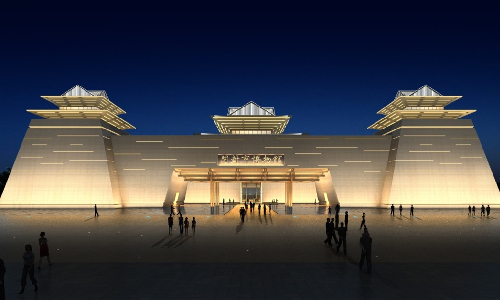
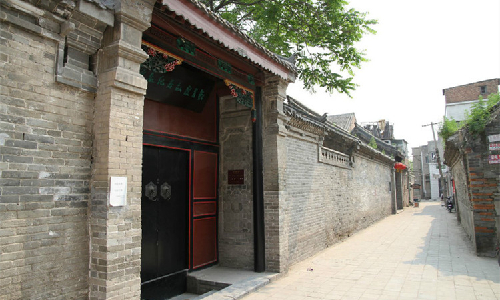
 Shanghai
Shanghai This morning, you will pack your luggage and we are going to leave Kaifeng for Shanghai. You will be driven to the train station with your tour guide and take the estimated train G1918 12:08/16:43 to Shanghai. When you arrive at the Shanghai train station in the afternoon, your guide will be waiting for you there and you can have a rest in the local hotel we have arranged for you.
Today, we will go to the Shanghai Jewish Refugees Museum (closed each Monday). This Museum is the site of the former Jewish Moishe Synagogue, which now consists of two parts, the Moishe Synagogue and the Heritage Exhibition Hall. The synagogue was built in 1907 somewhere else and then moved here by Russian Jews and became a synagogue for Russian and Central European Jews. Between 1933 and 1941, Shanghai hosted refugees from Europe who escape Nazi Holocaust. Nearly 20,000 Jewish refugees lived in the Restricted Sector for Stateless Refugees in the Tilanqiao Historic Area of Hongkou District, mainly in the public concessions and in the relatively low-cost living area in Hongkou District. In residential areas, a room usually accommodates more than 30 people, and at the most crowded time, a room can accommodate more than 100 people. To make a living, they had to do some odd jobs, like delivering briquettes, repairing electrical appliances, and baking bread. Their living standard was improved later through their hard work. In the square of the museum, there is a monument engraved with 18,578 names of Jewish refugees who lived in Shanghai. By the end of the war, most of the Jews returned to their homeland, and by 1957, only about 100 Jews remained in Shanghai. But the "Shanghai Ark", a symbol of the special bond between Shanghai and the Jews, remains forever.
Next, we will go to Huoshan Park. Huoshan Park with an area of 3,700 square meters is located in the southeast of Hongkou District and surrounded by traditional European buildings. This park was originally named Studley Park in 1917 and then renamed Huoshan Park in 1933. During World War II, Jewish refugees who lived nearby often came here to rest and get together. In addition, there is a designated area for stateless refugees here. During World War II, tens of thousands of Jews came to Shanghai to escape fascist persecution. After the war, the Israeli government and enterprises participated in the renovation of the park to thank the Shanghai people for hosting the Jewish refugees before and during World War II.
In the afternoon, we will visit the Yu Garden (closed each Monday), a private garden with a history of over 400 years of Pan Yunduan, a government official during the Ming Dynasty. He built the garden for the pleasure of his elderly parents. In Chinese, Yu has the same connotation as the happiness, hence the name Yu Garden was born. Yu Garden covers an area of over 20,000 square meters and is a typical garden architecture of southern China. The garden has more than 40 ancient buildings, including pavilions, houses and towers. It is the perfect place to relax with its tranquil and elegant scenery.
Then we will visit the Shanghai Tower, a landmark skyscraper in Shanghai, which was completed at the end of 2014. With a total area of 578,000 square meters, the main building has 127 floors above ground and five underground, with a total height of 632 meters. As the tallest building in Shanghai and the second tallest in the world, the Shanghai Tower can not only provide you the fastest lift experience in the world but also can give you the city’s entire landscape.
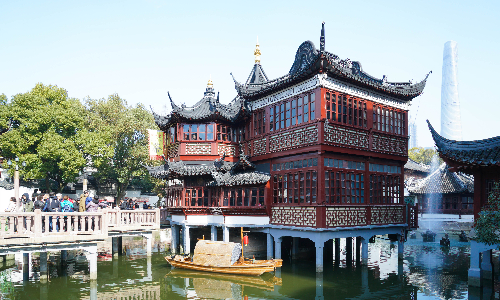
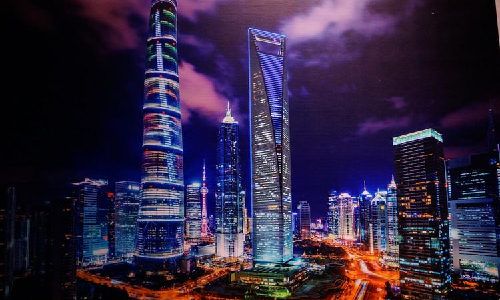
Today, our last day in Shanghai, we will visit the Jade Buddha Temple, located in the Putuo District of Shanghai. With a floor area of 8,856 square meters, Jade Buddha Temple is named after two jade Buddha statues enshrined in the temple. Generally, temples are built first, and then Buddha statues, while the Jade Buddha Temple in Shanghai has Buddha statues first and then build the temple. In 1882, Master Huagen went to India to make a pilgrimage to Buddha. After pilgrimage, when he passed through Myanmar on his way back to China, with the sponsorship of local Buddhist followers and overseas Chinese, he received five jade Buddhas of Sakyamuni and intended to take them back to Putuo Mountain. When he passed through Shanghai, due to the sincere request of local Buddhists, a seated Buddha and a reclining Buddha were left. Then the Jade Buddha Temple was built. Here you can not only feel the solemnity of the tall Buddha statues but also learn a lot about Buddhism. If you are interested, you can get an amulet by making a donation to the temple to pray for peace and safety for your family as well as yourself.
After lunch, we will drive southwest for about 1 hour to the Zhujiajiao Ancient Water Town, 48 kilometers away from the Jade Buddha Temple. Located in Qingpu District, Zhujiajiao Ancient Water Town is the nearest water town to Shanghai and is also known as the Venice of Shanghai. It is the best-preserved ancient town in Southern China with convenient land and water transportation, beautiful scenery as well as abundant produce. This town has a long history and a rich cultural heritage. We will take a boat tour here, and you will see the quaint markets with bells hanging at the door on the shores. After the boat tour, you can have a walk along the water.
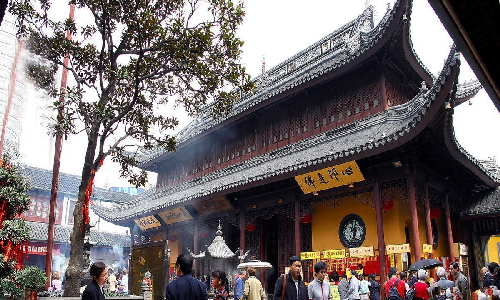
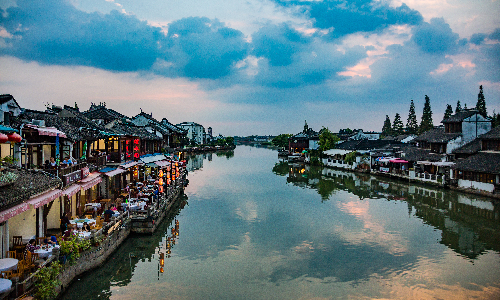
On the last day, we are going to finish this 12-day Jewish Tour in China, and we hope all of you have had a good time these days. Have a safe trip!
Editor: Fan Lin
Proofreader: Summer Hou
| City | Five Star hotel list | Four Star hotel list |
|---|---|---|
| Beijing | Sunworld Dynasty Hotel Beijing Wangfujing | Sunworld Hotel Wangfujing |
| Tianjin | The St. Regis Tianjin | Holiday Inn Tianjin Riverside |
| Harbin | Shangri-La Songbei, Harbin | Mercure Harbin Institute Of Technology |
| Xi'an | Tianyu Gloria Grand Hotel Xi'an | Sunworld Dynasty Hotel |
| Kaifeng | Sheraton Kaifeng | Pullman Kaifeng Jianye |
| Shanghai | Ocean Hotel Shanghai | Courtyard by Marriott Shanghai Central |
 |
![]() About your child or infant, please contact us for a discounted price.
About your child or infant, please contact us for a discounted price.



We started with a few days in Beijing & ended in Shanghai, from where we visited the Forbidden City and Great Wall. In between we visited Terra Cotta Warriors Museum, Panda Base, Shanghai Disneyland.

We had a wonderful holiday in China which will remain long in the memory. China is a breathtakingly beautiful country full of splendid temples and palaces, mountains and rivers, peaceful rural scenes and bustling shopping streets.
 QUICK ENQUIRY
QUICK ENQUIRY